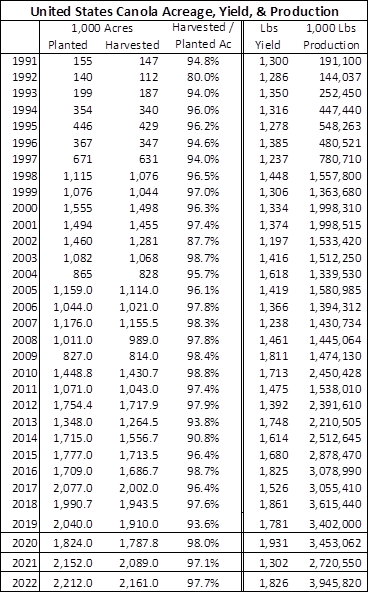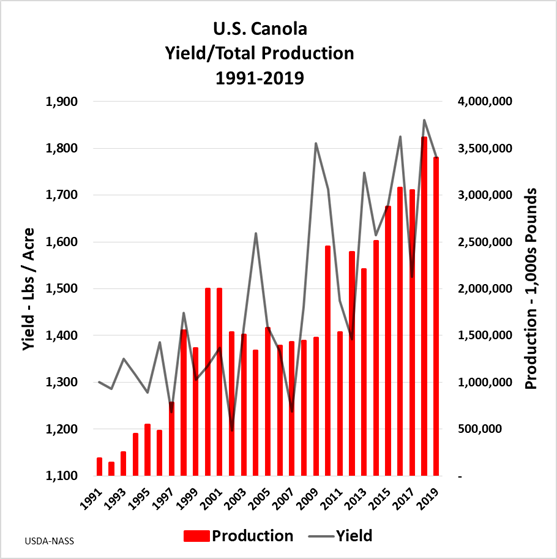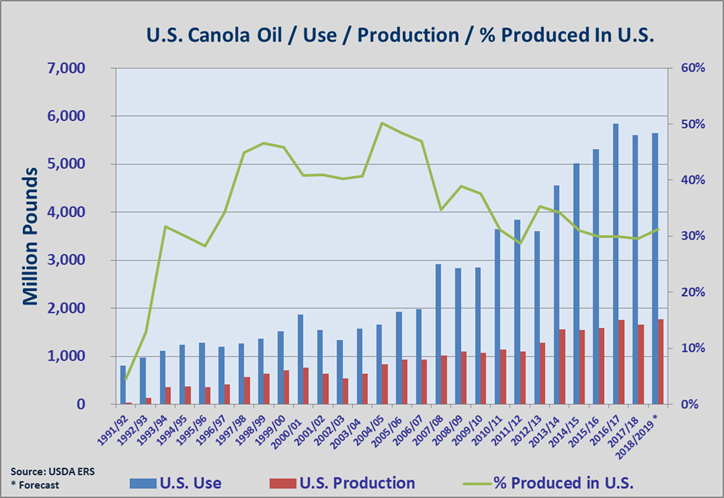Production
 Planting of canola in the United States first began in 1988 after being introduced in Canada in 1974. The charts below show dramatic increases in U.S. acreage and yield since 1991, growing to more than 2 million acres per year. Yet growth in production has not kept up with demand as the United States still imports 69 percent of its canola oil for domestic consumption.
Planting of canola in the United States first began in 1988 after being introduced in Canada in 1974. The charts below show dramatic increases in U.S. acreage and yield since 1991, growing to more than 2 million acres per year. Yet growth in production has not kept up with demand as the United States still imports 69 percent of its canola oil for domestic consumption.
U.S. canola had record production in 2022, up a whopping 45 percent from 2021, according to the USDA’s National Agricultural Statistics Service. Nearly 2.2 million acres were harvested with an average yield of 1,826 pounds per acre, resulting in 3.95 billion pounds of canola. North Dakota led production with nearly 3.42 billion pounds, followed by Washington (231,400), Montana (159,600), Minnesota (127,840), Oklahoma (5,600) and Kansas (3,780).
While North Dakota currently grows the lion’s share of U.S. canola, states in the Pacific Northwest, Southern Great Plains and mid-South are increasing acreage. Not only does canola provide high-value canola oil and meal, it benefits other crops like wheat in rotation by breaking up pest and disease cycles as well as provides ideal habitat for pollinators.
Global canola/rapeseed production is estimated at 70 million tonnes with the majority (roughly 20 million acres annually) grown in Canada and a significant amount in Europe (about 97 percent of “rapeseed” grown there is canola quality). Thanks to agricultural technologies, yields of canola/rapeseed have improved dramatically around the world since 1961!


